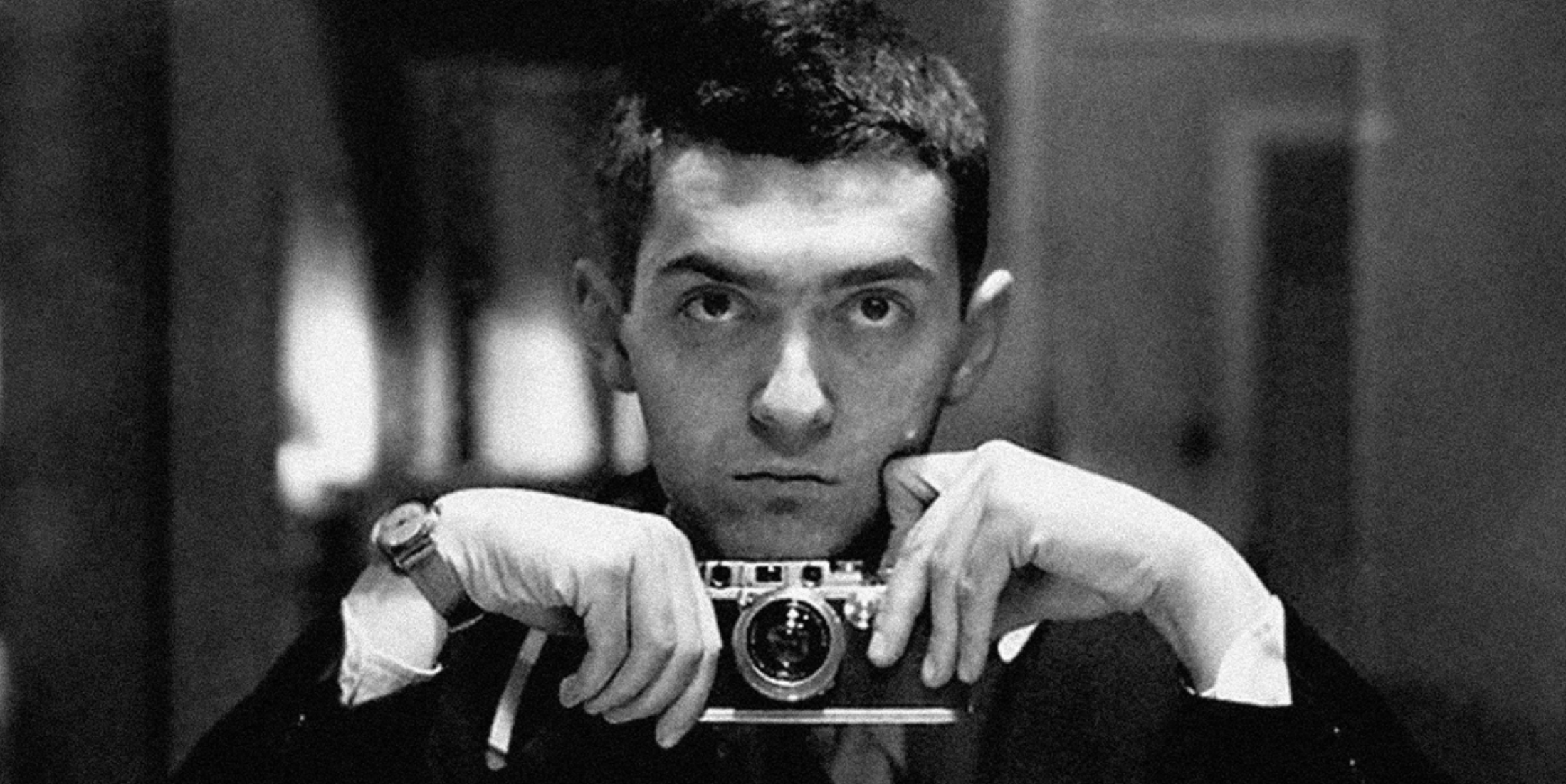
Stanley Kubrick: The life and work of the great filmmaker
In 1946, 'Look' magazine enlisted the talent of a young photographer to capture images within the bustling New York subway. While this project might not have aimed for revolutionary results from a 19-year-old, the captivating outcome continues to mesmerise viewers even today. The subway, a tightly packed and crowded space, especially in a vibrant city like New York, serves as the backdrop for candid portraits of people immersed in their daily lives.
The photographs for ‘Look’ magazine turned out to be a perfect reflection of the quieter side of one of the world's loudest cities. Each image conveyed the raw emotions of its subjects, capturing moments of love, playfulness, weariness, melancholy, and countless other feelings. These photos have eternally preserved the nightlife of the subway in 1946, freezing time and evoking a profound sense of authenticity.
Observing these photos, one can easily recognize the mastery of a young photographer who possessed the rare ability to capture the most sincere moments on the faces of strangers through the camera lens.
 Stanley Kubrick at the Sadler's Wells Theatre in Londona as a staff photographer for Look © Phillip A. Harrington
Stanley Kubrick at the Sadler's Wells Theatre in Londona as a staff photographer for Look © Phillip A. HarringtonThe artist, now renowned as filmmaker Stanley Kubrick, transitioned from capturing the essence of the New York subway and numerous other photographic projects to immersing himself in the world of cinema. Stanley Kubrick's life and work embody the essence of a visionary filmmaker, characterised by his uncompromising artistic vision, and thought-provoking narratives.
Throughout his biography, Kubrick created some of the most iconic films in the history of cinema. Stanley Kubrick passed away on March 7, 1999. Kubrick died in his sleep at his home in Childwickbury Manor, Hertfordshire, England, due to natural causes at the age of 70.
In this article, we delve into some of his best work.
Early life and formative years
Stanley Kubrick’s biography starts in New York. Raised in the Bronx, his upbringing was characterised by intellectual curiosity and a fascination with storytelling. His early influences ranged from his father's love for chess to his voracious reading habits, which nurtured his inquisitive mind. Kubrick's journey into photography began in his teenage years when he sold his first photograph to ‘Look’ magazine at the age of 17. This marked the genesis of his artistic exploration, as he honed his visual sensibilities and developed a keen eye for composition.
Kubrick's transition to filmmaking was a natural progression, marked by his foray into short films. His documentary-style short ‘Day of the Fight’ (1951) showcased his innate ability to capture raw emotions, while ‘The Seafarers’ (1953) demonstrated his proficiency in weaving narrative within a confined scope. These early works hinted at his directorial prowess and his instinctive command of visual storytelling.
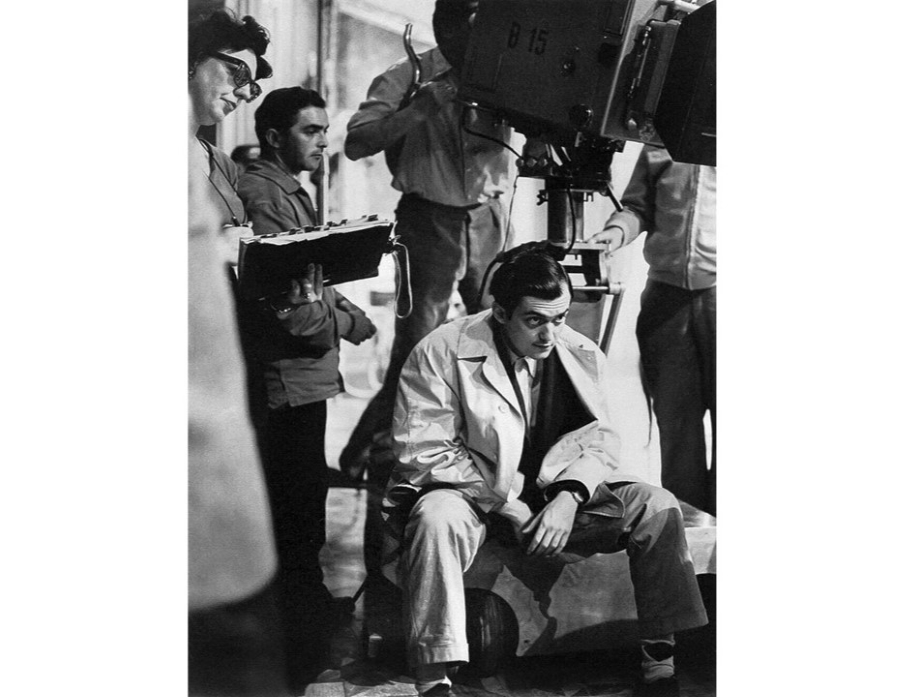 Stanley Kubrick on the set of the film 'Paths of Glory', 1957 © United Artists Corporation
Stanley Kubrick on the set of the film 'Paths of Glory', 1957 © United Artists CorporationIn 1953, Kubrick started his feature film journey with ‘Fear and Desire’, a war film that explored the complexities of human nature in conflict. The film, though met with mixed reception, marked his transition into feature filmmaking and the refinement of his distinctive narrative voice. However, it was ‘Paths of Glory’ (1957) that garnered critical acclaim, showcasing Kubrick's ability to navigate intricate themes like morality, authority, and the human condition.
Kubrick's early successes culminated in ‘Spartacus’ (1960), a monumental epic that challenged his creative control but underscored his adaptability within the industry. His early work laid the foundation for his cinematic legacy. Kubrick's journey from photography to short films and eventually feature films exemplifies a journey that would go on to reshape the landscape of cinema.
Auteur filmmaker: Kubrick's signature style and techniques
Stanley Kubrick can be described as an auteur filmmaker. Throughout his illustrious career, he showcased a signature style and distinct approach to filmmaking. One hallmark of Kubrick's work was his meticulous attention to detail, evident in every frame of his films. Take, for instance, the iconic scenes of ‘2001: A Space Odyssey’(1968) where Kubrick painstakingly choreographed the weightless movement of astronauts aboard a spacecraft. His dedication to realism and technical precision elevated the film to unparalleled heights, captivating audiences with its visual splendour and immersive experience.
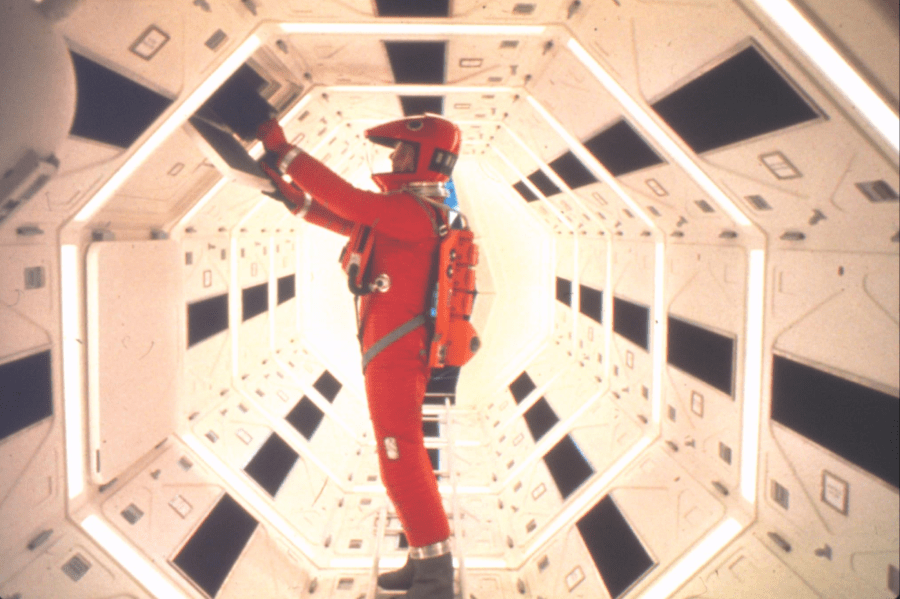 2001: A Space Odyssey (1968) © IMDb
2001: A Space Odyssey (1968) © IMDbIn ‘The Shining’ (1980), Kubrick's fastidiousness is evident in the carefully crafted set design of the eerie Overlook Hotel, creating an atmosphere of unease that lingers long after the credits roll. In the film, every rug, every painting has a meaning.
One of the distinctive techniques found in films directed by Stanley Kubrick is what's come to be known as the 'Kubrick stare'. This cinematic trademark involves the main characters of Kubrick’s iconic films like 'A Clockwork Orange’ (1971), ‘The Shining’ (1980) or 'Full Metal Jacket’ (1987), piercing the camera lens with their gaze, creating an intense and immersive connection. It's like stepping into the characters' world and feeling their emotions firsthand, even if it generates a sense of unease. Although the gaze was one of the most significant elements incorporated first in Hitchcock's ‘Psycho’ (1960), it’s still remembered as a distinctive mark of Kubrick’s style.
Echoing his proclamation that
if it can be written, or thought, it can be filmed,
Kubrick’s creations stand as a resounding testament to the veracity of that statement.
Genre exploration and narrative themes
From the boundless realms of science fiction to the haunting landscapes of war movies, films directed by Stanley Kubrick encapsulate an unparalleled artistic journey. In ‘2001: A Space Odyssey’, he ventured into the cosmic unknown, stretching the boundaries of human imagination with meticulously crafted visuals and a philosophical undercurrent that still captivates minds today. Transitioning seamlessly, his ‘Full Metal Jacket’ delved into the visceral battlegrounds of war, unflinchingly portraying the raw brutality and psychological toll it exacts.
A Clockwork Orange | Trailer
Beneath the diverse tapestry of genres, Kubrick wove a labyrinthine web of recurring themes and motifs that stitched his filmography together. The unsettling gaze of authority and its entwined relationship with humanity's darker impulses unfolded in ‘A Clockwork Orange’, as he probed the limits of free will and the tension between societal order and individual autonomy. The ever-watchful eye of surveillance pervaded ‘The Shining’, amplifying the haunting ambience of isolation and unravelling sanity. Moreover, the duality of man and machine surfaced repeatedly, as seen in ‘Dr. Strangelove’ (1974), where the precarious balance of power hinged on the absurdity of nuclear warfare.
Eyes Wide Shut | Trailer
Kubrick's narrative genius transcends the confines of celluloid, wielding his films as probing instruments to excavate the depths of the human condition and challenge the shackles of societal norms. In ‘Eyes Wide Shut (1999)’ the veneer of opulence shatters to reveal the unspoken desires and hidden vulnerabilities that lie beneath. The enigmatic odyssey in ‘2001: A Space Odyssey’ navigates through evolution, artificial intelligence, and the essence of consciousness, compelling us to ponder our place in the vast cosmos. Notably, ‘A Clockwork Orange’ thrusts the concept of morality under a disconcerting spotlight, forcing us to confront the uncomfortable nexus between rehabilitation, choice, and true rehabilitation. Kubrick stirred our collective consciousness and urged us to question the very foundations upon which our beliefs and norms rest. One unifying quality of films directed by Kubrick is their fearlessness. Throughout his biography, Kubrick never shied away from controversy. His vision always meditated on controversial ideas, and sometimes his working methods were also described as one.
Collaboration and working methods
The themes, techniques, and brave decisions all made Stanley Kubrick's movies into iconic pieces, however, Kubrick's power also lay in the fact that he knew how to choose the right partner for collaborations.
Working with Kubrick was never easy, his dedication to perfection was evident not only in the final product but also in the relationships he fostered with his collaborators. He was renowned for his unwavering control over every facet of production. This approach was particularly evident in his partnership with cinematographer John Alcott. However, in ‘Barry Lyndon’(1975) their collaborative effort birthed a visual marvel, as they harnessed natural light and recreated 18th-century aesthetics.
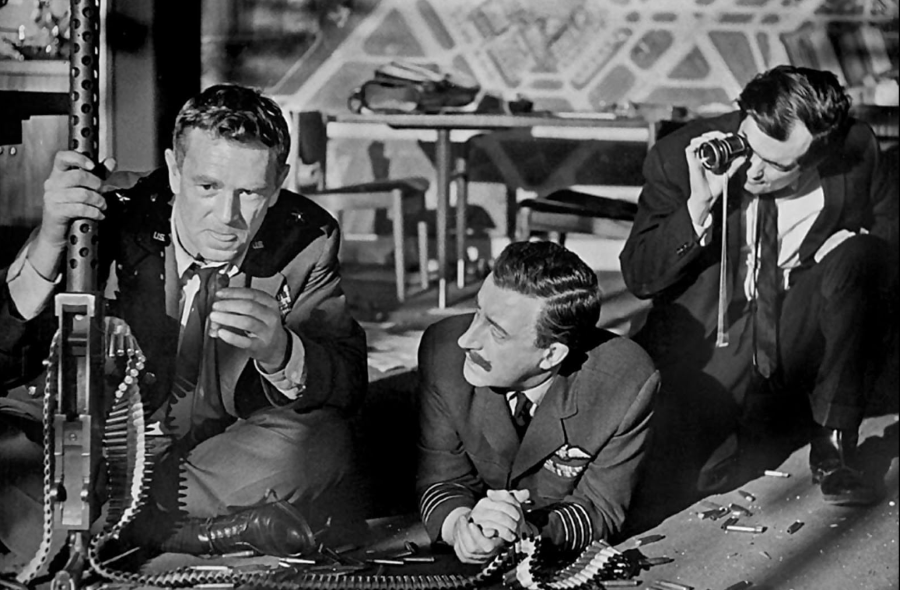 Stanley Kubrick, Peter Sellers, and Sterling Hayden on the set of Barry Lyndon (1975) © IMDb
Stanley Kubrick, Peter Sellers, and Sterling Hayden on the set of Barry Lyndon (1975) © IMDbKubrick's working methods exuded both precision and adaptability, a blend that often perplexed his crew. In ‘The Shining’, he famously subjected actress Shelley Duvall to numerous retakes, pushing her to emotional extremes to achieve the desired authenticity. Many have criticised the director for his unorthodox techniques, as for Kubrick this was the method for getting the best result that was closest to his vision.
In ‘2001: A Space Odyssey’, Kubrick's collaboration with science fiction author Arthur C. Clarke exemplified his desire for embracing innovative ideas. Their synergy led to a transformative exploration of human evolution and artificial intelligence, forging a cinematic experience that transcended its time.
Kubrick's collaborations extended to music, a quintessential element of his films. His partnership with composer Wendy Carlos in ‘A Clockwork Orange’ yielded a groundbreaking electronic score that mirrored the film's dystopian ambiance. The fusion of classical compositions with avant-garde sounds not only amplified the film's thematic depth but also showcased Kubrick's willingness to experiment with auditory dimensions.
Yet, Kubrick's controlling habits as a director occasionally led to friction. During the making of ‘Full Metal Jacket’, his unrelenting perfectionism clashed with actor R. Lee Ermey's improvisational talent. While Ermey's on-set spontaneity added an authentic layer to his portrayal of Gunnery Sergeant Hartman, Kubrick's desire for precision led to a dynamic that exemplified both collaboration and creative tension.
In essence, Stanley Kubrick's collaboration and working methods were a paradox of control and innovation. His films were not only a testament to his directorial prowess but also a canvas for the amalgamation of his vision with the talents of his collaborators.
Critical and commercial success
As stated by film historian and Kubrick scholar Robert Kolker,
Kubrick’s films were more intellectually rigorous than the work of any other American filmmaker.
Likewise, he was critically acclaimed from the early stages of his career. Kubrick faced many critiques, however, this never stood in the way of great commercial success.
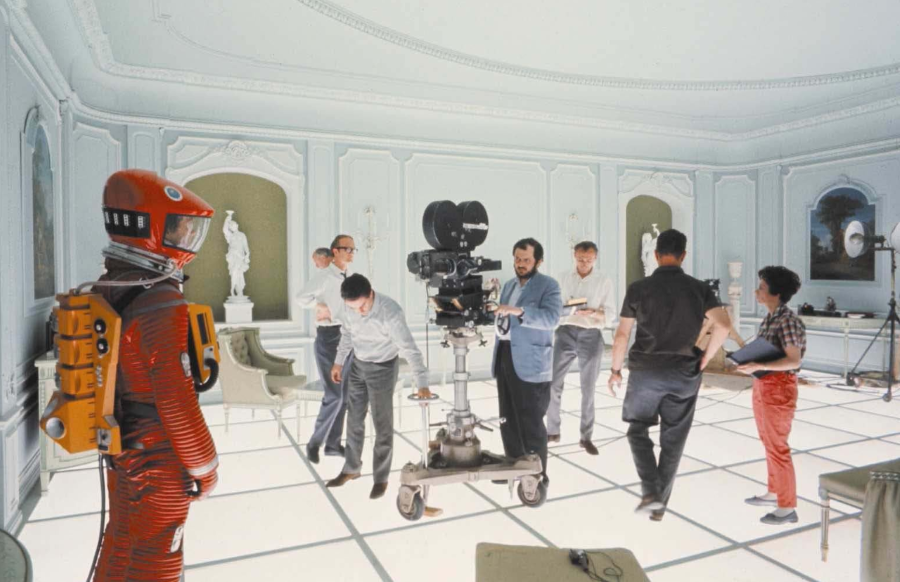 Stanley Kubrick and Keir Dullea in 2001: A Space Odyssey (1968) © IMDb
Stanley Kubrick and Keir Dullea in 2001: A Space Odyssey (1968) © IMDbHis ‘2001: A Space Odyssey’ is a great example of such a triumph. The film's groundbreaking visuals and exploration of humanity's cosmic origins drew audiences, while its metaphysical themes garnered critical praise. Likewise, ‘The Shining’ blended horror with enigmatic storytelling, yielding iconic moments that resonated with both viewers and critics.
Kubrick's command of diverse genres shone in war films like ‘Paths of Glory’ and ‘Full Metal Jacket’. The former, a scathing critique of military indifference, resonated with its emotional depth and social commentary. The latter peeled layers of psychological trauma in the Vietnam War, revealing Kubrick's profound grasp of human darkness.
‘A Clockwork Orange’ showcased his provocative edge, sparking debates with its exploration of free will and societal control. The film's audacity attracted audiences, while its intricate themes garnered critical analysis.
Kubrick's legacy rests on his artful navigation of complexity. His films, from ‘2001: A Space Odyssey’ to ‘A Clockwork Orange’, encompassed layers of meaning that appealed to both intellect and emotion. In an industry often divided between artistic integrity and commercial viability, Kubrick's success emanates from his unique ability to harmonise the two.
Stanley Kubrick's impact on cinema is undeniable, and his awards and accolades underscore his enduring influence. With an impressive 13 Academy Award nominations, Kubrick's work was celebrated by audiences and acknowledged by critics. He secured wins in crucial categories, including Best Special Visual Effects for ‘2001: A Space Odyssey’ and Best Cinematography for ‘Barry Lyndon’, showcasing his technical mastery. Kubrick's narrative brilliance also shone through with nominations such as Best Director for ‘A Clockwork Orange’(1971).
Stanley Kubrick's legacy and eternal impact on cinema
Stanley Kubrick transformed the medium of cinema. His unparalleled ability to blend thought-provoking narratives with groundbreaking techniques has inspired many artists. Kubrick's influence extends beyond the silver screen, shaping subsequent directors and contemporary culture.
Barry Lyndon | Trailer
Artists like Christopher Nolan, known for his intricate narratives and attention to detail, have drawn inspiration from Kubrick's approach to storytelling. Additionally, the band Radiohead's music video for "Daydreaming" echoes the eerie, atmospheric tension often found in Kubrick's films. Kubrick’s ‘2001: A Space Odyssey’ was a major inspiration for iconic artist David Bowie, and his 1969 single ‘Space Oddity’.
Kubrick's life and work stand as an extraordinary narrative of creative evolution. With provocative ideas, bold cinematic decisions, and enigmatic imagery, Kubrick forever changed the cinema landscape, bestowing upon us some of the most iconic characters and reflecting on life through the lens of authenticity. The combination of his vision and boldness as an artist left a mark in the history of the medium, and cemented Kubrick’s legacy as a film director who continues to inspire, engage, provoke, and transcend temporal confines.
Looking for more ways to feel inspired? Don’t miss our reading list for the summer.
Credits for the Main photo: © IMDb
